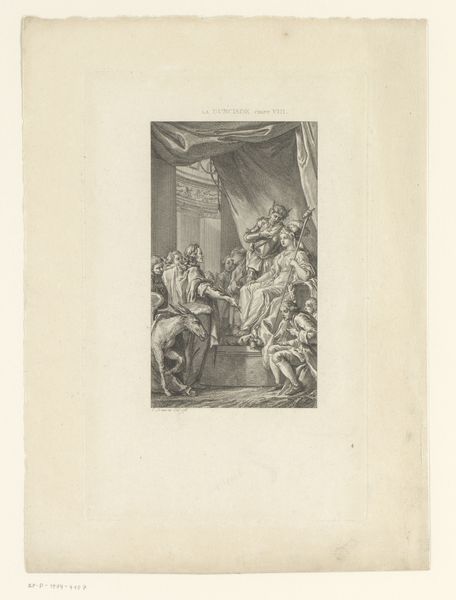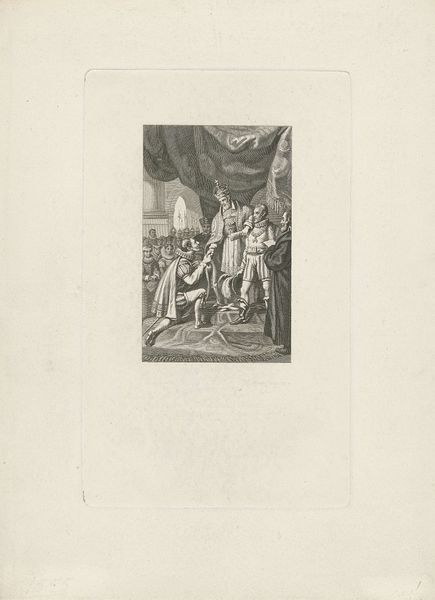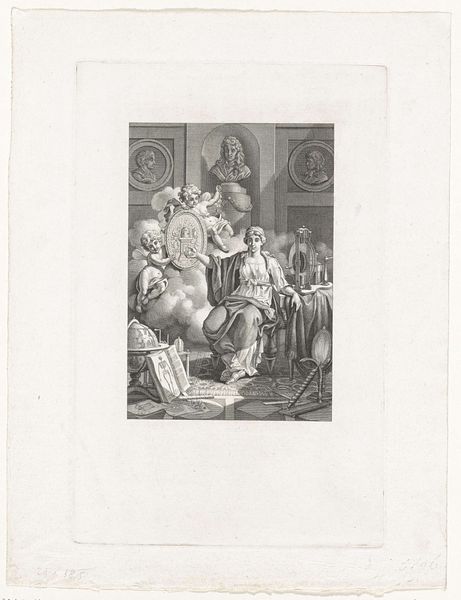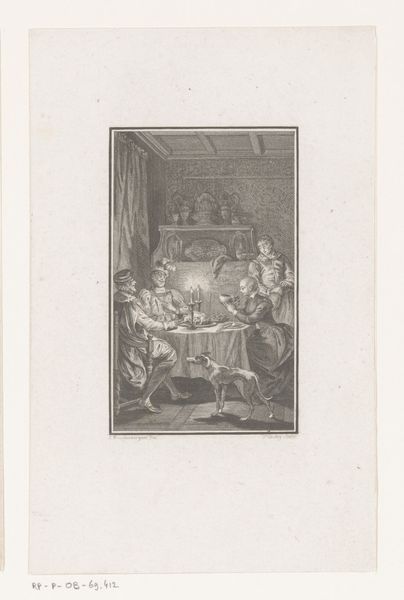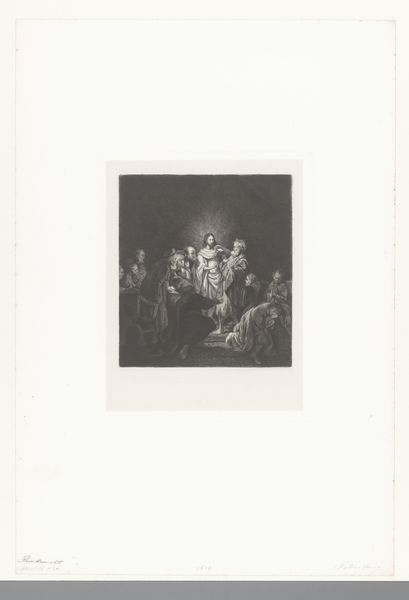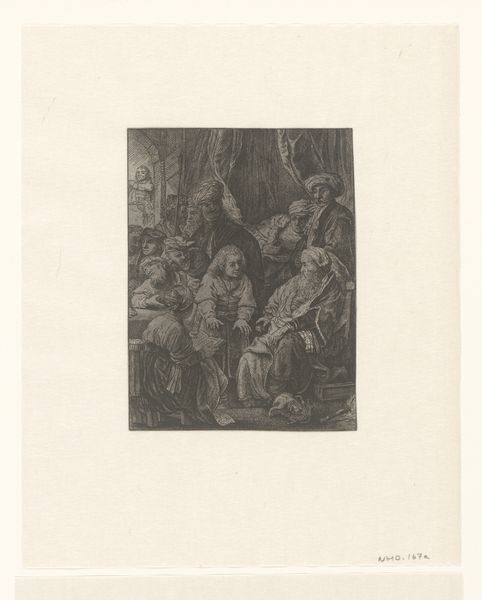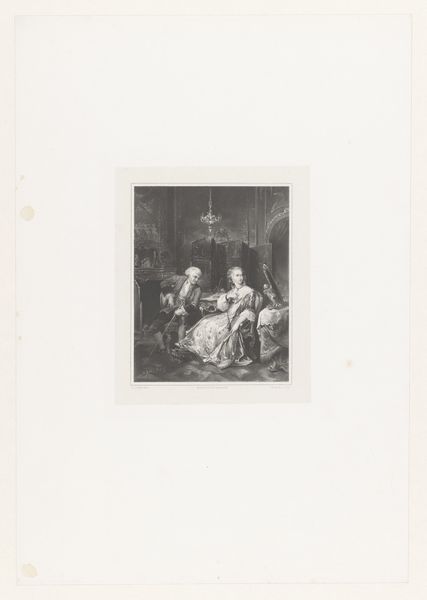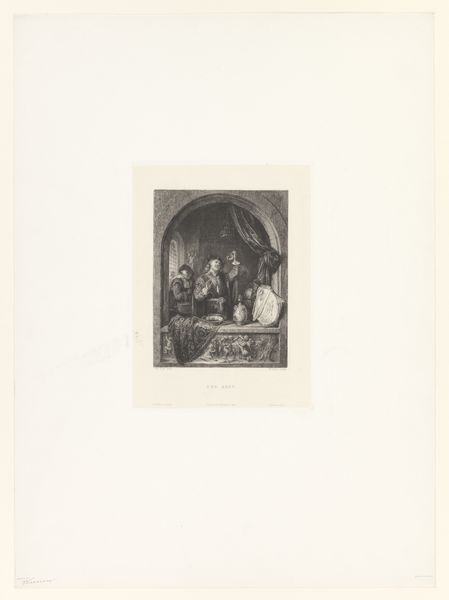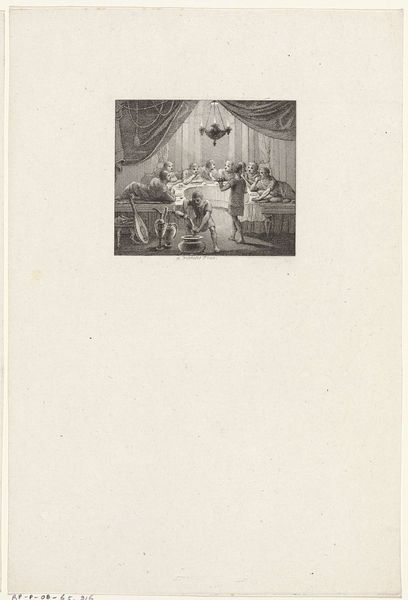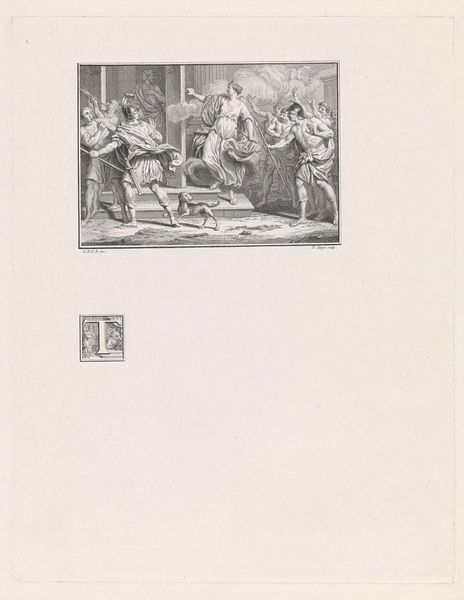
Dimensions: height 251 mm, width 168 mm
Copyright: Rijks Museum: Open Domain
Curator: Look at this intriguing scene. Reinier Vinkeles crafted this print, titled "Man leest drie anderen voor," sometime between 1751 and 1816. It's an engraving, ink on paper, currently residing here at the Rijksmuseum. Editor: Immediately, I get a sense of intimacy and concentrated energy. They're all huddled around that central figure, bathed in light. It feels like eavesdropping on a very important, yet very private, moment. Curator: Absolutely, and the setting contributes. We see these figures gathered in what appears to be a domestic interior. Look at how the light source highlights their faces; that’s a very nice contrast that draws the eyes. Editor: Indeed. This scene could have radical implications depending on who is being positioned in proximity to the text, and how! There's an unmistakable hierarchy established, the speaker as the active knower and the other as the relatively passive receptacles. Is the text itself empowering, and if so, to whom? Curator: You raise such interesting points. Vinkeles really understood light and shadow, and the theatrical staging emphasizes drama, no? Perhaps it speaks to a shared need for enlightenment during an age of great change. It captures a very private form of cultural life that might have been shaping larger events in interesting ways. Editor: That resonates with me, I think that one figure lurking behind may express just that fear that cultural life is something to be watched and controlled. Curator: Well, in its making as a print it’s almost like a reproduction, as well! I appreciate that the intimacy it conveys feels so radically at odds with the fact it was a tool of its time to bring more people in contact with literature! Editor: Definitely. "Man leest drie anderen voor" is a window into the quiet, but potent, world of shared knowledge. Curator: It shows that the power dynamics behind knowledge production and storytelling were just as critical then as they are today. Thanks for letting us explore those insights together!
Comments
No comments
Be the first to comment and join the conversation on the ultimate creative platform.

